Charleston, South Carolina, the “Holy City”, is one of the oldest and most fascinating metropolises in the U.S. because of its history and cultural attractions. It was founded in 1670 and still has 500 pre-Revolutionary buildings and 400 churches. Nine of the 20 richest men in the Colony (later the United States) lived in Charleston between 1720 and 1820, and their wealth shows in the architecture. A consciousness of its history permeates the city and protects its elegant mansions and historic buildings. You can almost see Rhett Butler suddenly appearing and strolling with him through his hometown.

Celebrated by the Marquis de Lafayette as one of the most beautiful and pleasant cities of the 18th century, Charleston inhabitants throughout history have suffered fires, earthquakes, slavery, war, hurricanes and extreme poverty but it has managed to survive. Its citizens pride themselves on having reinvented the city in order to survive disasters. Charleston’s historic architecture and charm may be the main reasons for the city’s success as a highly touted tourism destination, but a major attraction is the gastronomic revolution it has experienced in recent years. A combination of innovative modern cuisine with traditional Southern dishes makes Charleston’s cuisine one of the best in the nation.
Day One
We stayed at the beautiful and historic Belmond Charleston Place Hotel, whose fabulous lobby, Thoroughbred Club and excellent restaurants are evidence of the quality of Belmond, owners of the legendary Orient-Express. In the elegant Suite 4F we found all the elements of a first-class modern hotel and received excellent service. A junior suite in October 2021 would set you back $782 a night due to the dramatic hotel rate increases due to the pandemic.

After visiting the colorful Marketplace and shopping for African American “Gullah” culture crafts, we walked through historic streets such as Meeting, Legare (which has beautiful iron railings), Rainbow Row (with pastel-colored houses), and the Battery, facing the bay, where we stopped to see beautiful mansions and the White Point Garden (1837). It was there that, in 1718, they executed the planter-turned-pirate Stede Bonnet and 50 like him to punish them for the destruction caused by his blockading of the port of Charleston.
The exquisite “brunch” on the Lowcountry Bistro mansion’s narrow terrace included crab soup and fried chicken with Waffles, prepared by Chef Mike Harvey. Unfortunately, our Internet search in August 2021 revealed that this restaurant is closed.
After lunch we rode in Old Carriage, an antique horse-drawn carriage, with a guide who gave an excellent introduction to historic Charleston. A tour of the Gray Line Historic District is also helpful. Later we took an Uber to visit Drayton Hall, an authentic Antebellum plantation from the colonial period (18th century) and considered the best example of Georgian Palladian architecture in North America. John Drayton was a successful plantation owner and built his mansion in keeping with the most elegant of British society. In December they do beautiful candlelight tours.

Dinner at the cosmopolitan Charleston Grill at Belmond Charleston Place was exquisite. Chef Michelle Weaver prepared Foie Gras with Nutella and shortbread, a fish and shrimp gumbo, and a delicious Aztec chocolate dessert. The service we received was extraordinary and we enjoyed the live music of a talented violinist.
Day Two
The morning was devoted to the Georgian-style Heyward Washington Mansion (1772), built by Thomas Heyward, one of the four Charleston residents who signed the Declaration of Independence. It features a 1740’s kitchen and formal gardens with 18th century plantings as well as beautiful period furnishings. Built in 1772, this Georgian-style double house also features formal gardens with plants typical of the South Carolina Lowcountry of the 18th century.
During lunch at Eli’s Table, we loved the award-winning Shrimp with Grits and Benedict Sauce; the Red Rice Hash; and the Red Rice Risotto with Puffed Sausage. Their bold menu takes advantage of local and fresh ingredients. Dinner includes exotic Southern dishes such as Duck & Waffles ($37) and Smoked Gouda Grits ($7).

In order to comply with a limited budget, we moved our headquarters to the Historic District’s Hampton Inn Hotel, which in October 2021 can cost for as little as $242 for a nonsmoking room with two queen beds. We stayed in Suite 146, a comfortable and very spacious room. The hotel is located across the street from the 1803 Joseph Manigault Mansion, which you should not miss. The son of these wealthy French Hughenots, Gabriel Manigault, married to Charlotte Drayton, designed and built the mansion in the Federal style. The same family occupied it until 1920. Across the street is the Charleston Museum, where we saw an overview of the city’s dramatic history and how slaves contributed to its economic success.
In the lovely garden of the 82 Queen Restaurant, also in the Historic District, we sampled the refined Lowcountry cuisine, which included their legendary fried green tomatoes, a tomato pie, crab cakes with red rice, shrimp and rice Jambalaya, and a spectacular pecan pie made by the owner’s wife. The menu also includes favorites such as Lowcountry Seafood Gumbo, Carolina Crab Cakes, and Cheddar Stone-Ground Grits.
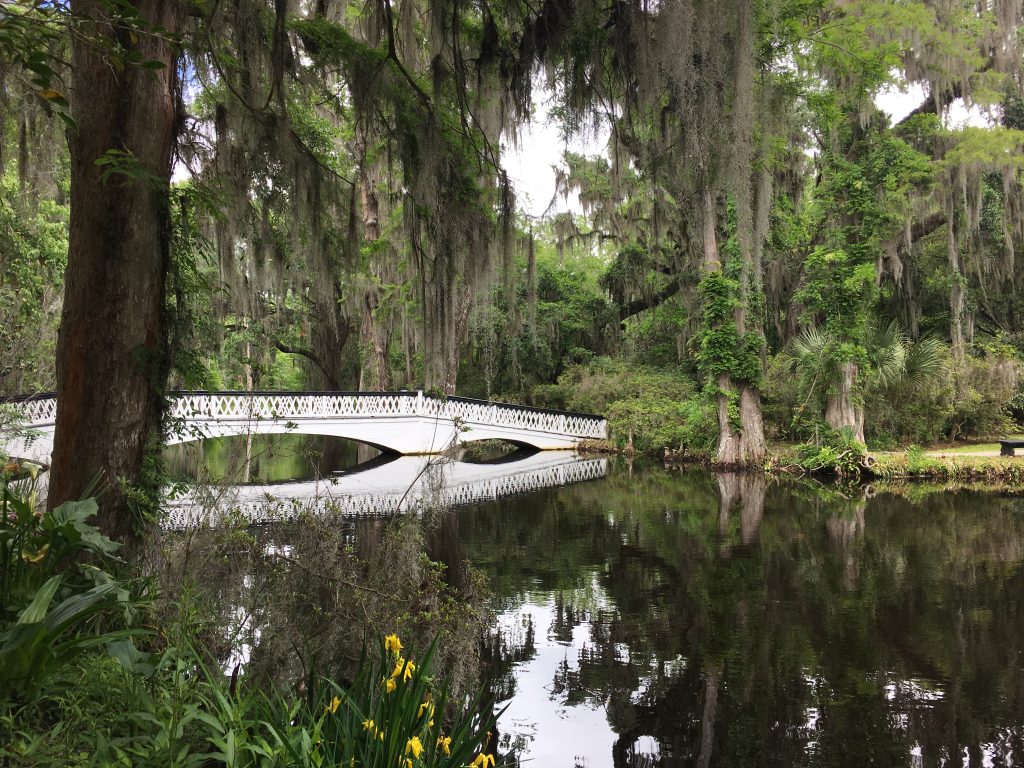
Third Day
The docents leading tours in the 18th and 19th century mansions show passion for the city and a certain nostalgia for a past of sophistication, wealth and culture. But sometimes they forget that this past was also tainted by slavery. Hundreds of thousands of slaves entered the U.S. through Charleston. In April 1861, the U.S. Ordinance of Secession was signed there and Confederate troops fired for the first time in the Civil War at Fort Sumter, opposite Charleston, provoking the attack by federal forces that started the war. The experience of slaves is still vivid in the plantations outside of Charleston.
We rented a car to see three plantations in one day. The first, Middleton Place (1755), is a very interesting historic property, where we admired the oldest formal gardens in the USA (65 acres), of camellias, azaleas, magnolias and other beautiful plants. Arthur Middleton signed the Declaration of Independence and Williams Middleton, his grandson, signed the Ordinance of Secession. Union soldiers looted and burned the main mansion but the less damaged building was rebuilt as the family home. This Mansion-Museum illustrates the life of the aristocratic Middletons, and displays elegant furnishings, original porcelain and silver objects as well as antique oil portraits of various members of the family. It has miraculously remained the property of the same family for 320 years.
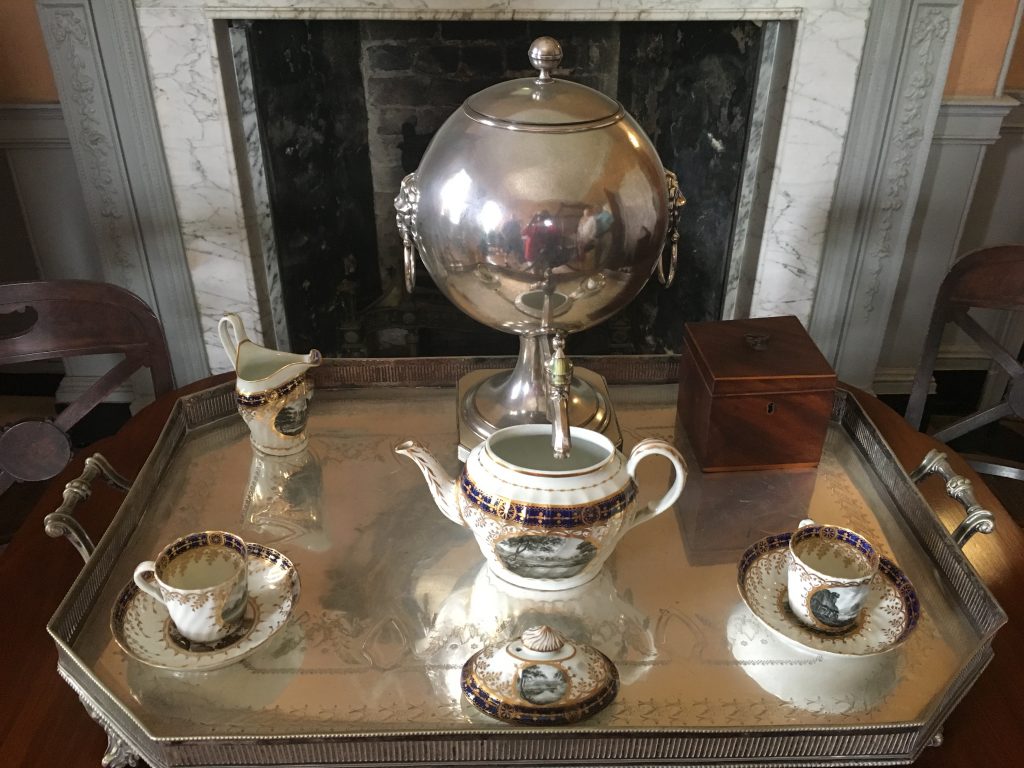
The Foundation that runs Middleton Place is committed to telling the story not just of the plantation’s white owners but also of its African and African-American population. In the stables actors dressed as in the 18th and 19th centuries revive craftsmen who were slaves, for example, blacksmiths and carpenters. Special tours provide a view of the everyday life of enslaved people. In this area children will also enjoy seeing interesting animals such as a gigantic guinea pig.
Magnolia Plantation and Gardens, founded by the Draytons in 1676, is the oldest tourist attraction in the Lowcountry. Thousands of plants and flowers adorn the romantic gardens, the oldest public gardens in North America. The beautiful mansion near the Ashley River features antiques, china, and other belongings of the Draytons, who still own it. A tour of the slave cabins (1850s) illustrates their Gullah life and culture.
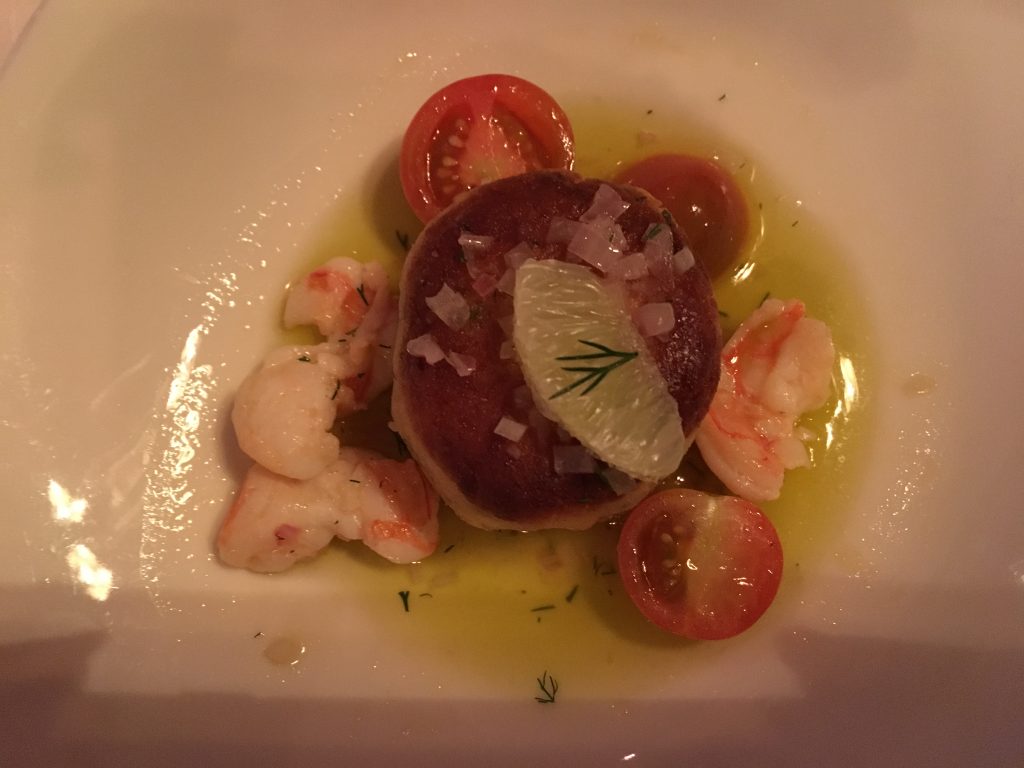
We recommend the new Henrietta brasserie lunch at the Dewberry Hotel, with exquisite Southern-French food in an elegant setting. The appetizer of Smoked Mackerel Terrine was followed by Pappardelle and classic bisté with French-style fries. We were impressed by another original dish of Tempura Fried Lemons with Snap Peas & Green Sauce Shard. The praline ice cream and cream cheese ice cream is spectacular.
Boone Hall, owned by the McRae family since 1955, has a legendary entrance with trees and “moss,” which was featured at the beginning of “Gone with the Wind.” The amusing guide told the story of John Boone, who founded the plantation in 1681, on the banks of Wampacheone Creek. The mansion, built in 1936, over the remains of the original, is beautiful and furnished with antiques. The eight original brick slave cabins offer historical facts about their hard life, described eloquently by a guide. An actress and singer also gave an interesting presentation on Gullah culture in the plantation’s cafe. You can tour the huge plantation on a little train.

Dinner at Slightly North of Broad (S.N.O.B.), a meeting place for Charleston leaders, was delicious. Chef Frank Lee uses fresh produce from local farms. After an appetizer of Shropshire and other cheeses, we tried the exceptional shrimp dish with bacon, tomatoes, scallions and grits, with house-made chorizo, and an excellent beef tenderloin with fromage frais, red onion and mashed potatoes. Other specials are Panko fried Carolina Mountain Trout and traditional Shrimp & Grits. The dessert of Pot de Creme de Chocolate with sea salt was wonderful. If you yearn for a homemade Peach Cobbler with Bourbon and vanilla ice cream, this is the place to try it.
Fourth Day
The Nathaniel Russell Mansion-Museum (1808), in neoclassical style, was built by an Englishman from Bristol. It offers an enjoyable insight into how the mercantile elite of the late Colonial and Federal periods lived, in opulent homes, thanks to the enslaved people who made their comfortable lives possible. In 1765 Russell came to the richest colony in the U.S. and established himself not only as a merchant but also as a slave trader. In 1808 he moved his family to the luxurious townhome that now houses the museum and spent a fortune on its construction and decoration. The home has three stories, geometrically shaped rooms, ornamented plasterwork and formal gardens, as well as a “flying staircase” described as “perfectly proportioned” by the founder’s great-granddaughter. The house is restored to how it was in 1808 by the Historic Charleston Foundation, which purchased the house in 1955. The doors are original and there are displays of the family’s artifacts everywhere. The original kitchen house, where the slaves lived, features pottery found by archaeologists. Visiting these homes reveals how Charleston’s prominent families intermingled. Nathaniel’s daughter, Alicia Russell, married Arthur Middleton, of Middleton Place.
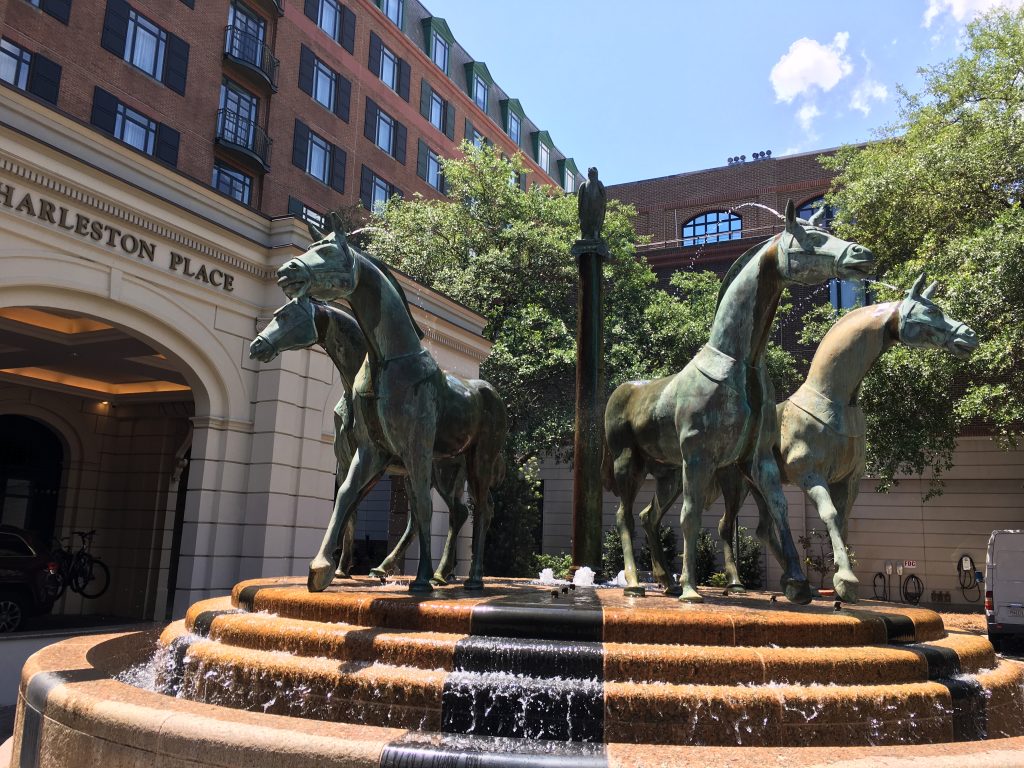
From the Edmondston Alston Mansion-Museum (1825), originally Federal style, we had a magnificent view of Charleston Bay, from its piazza (wide second floor balcony). Scottish merchant Charles Edmondston sold it to Charles Alston in 1837, who remodeled it in Greek Revival style and his family still owns it. To serve them, 17 slaves lived there. From the piazza General Beauregard sighted the bombardment of Fort Sumter in 1861. Original 19th century furniture and artifacts from the Alston family remain in the collection. Behind is a beautiful “bed and breakfast” hotel.
After visiting these mansions we had lunch at Le Farfalle, in a modern warehouse. We recommend the Prosciutto de Parma, Agnolotti with Duck Confit and Funghi Misti, and Rigatoni Verde, prepared by Chef-owner Michael Toscano, American son of Mexican and Italian. Other popular dishes include East Coast oysters, Bucatini alla Norma, Squid Ink Spaghetti and Fideos (toasted Angel hair, blue crab, cherry tomatoes, Habanero and basil).
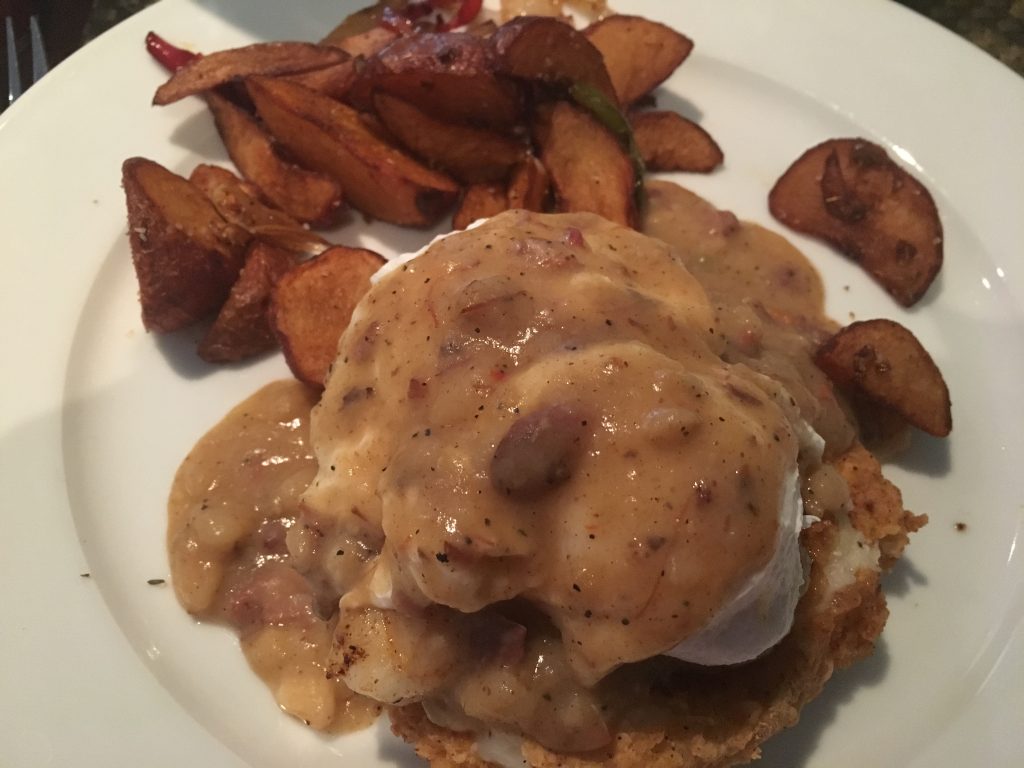
At 6 p.m. we arrived at the old Congregational Circular Church, one of the oldest continuously worshipping congregations of the South. Founded in 1681 by Charles Towne, the graveyard monuments date from 1695. The original circular hall burned in 1861 but bricks from it were used in building the present sanctuary completed in 1892. It is the church where John Newton, the English composer of Amazing Grace, worshipped for several Sundays in 1749. There we saw a fabulous show, Sounds of Charleston, with old Civil War music, gospel, and the opera “Porgy and Bess,” composed in Charleston by Gershwin and inspired by Gullah culture. It culminated in a two-hand concert of Gershwin’s passionate Rhapsody in Blue. We were especially impressed by Charleston’s African-American singer Ann Caldwell. Many performances at this church conclude with the cast singing “Amazing Grace.”
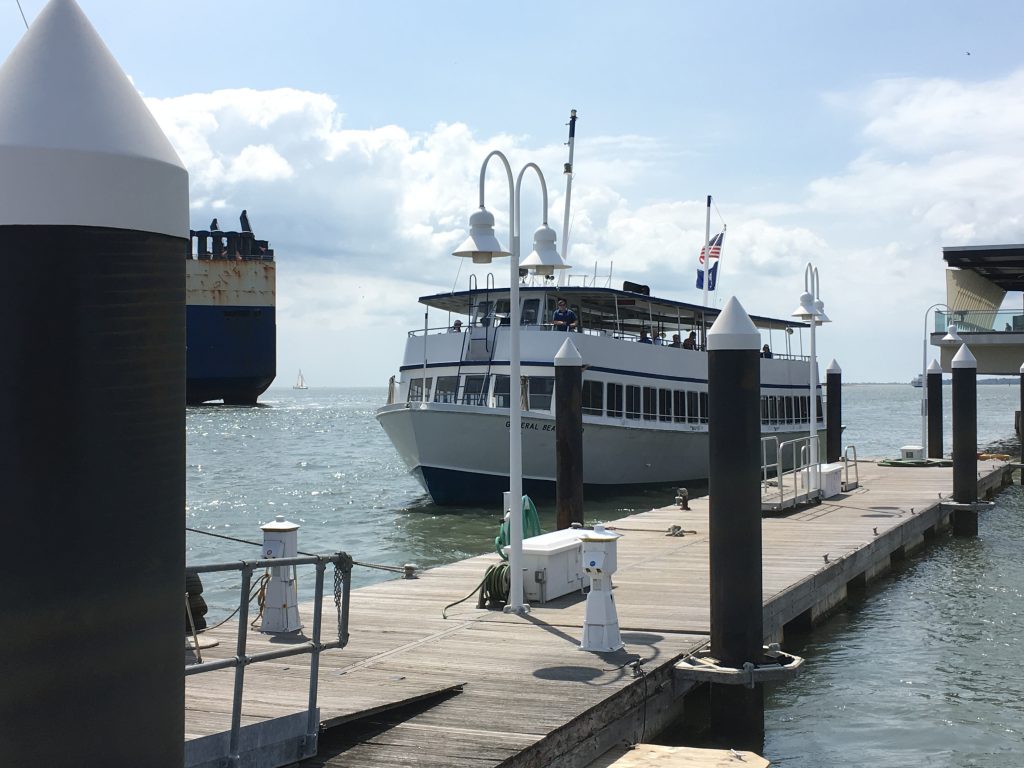
Another wonderful dinner, at the famous High Cotton, began with an exceptional crab and onion soup, followed by an Oscar Filet Mignon and an original dish of Tempura Fried Scallops and Lobster, in an elegant setting and with live jazz music at the bar. All this culminated in the unforgettable tasting of a Praline Soufflé.
Day Five
To get a good understanding of the importance of Charleston Harbor and its harbor, we took a Spiritline Charleston Harbor Tours tour, with an expert historical guide. The tour included getting close to Fort Sumter, the USS Yorktown, the Ravenel Bridge, Pinckney Castle and other interesting destinations. We even saw replicas of the galleons La Niña and La Pinta, which had just arrived in Charleston.

For lunch we recommend Smoked BBQ on King Street, the street of stores and excellent restaurants. Their chicken wings have won awards, and they even have a Cuban sandwich on the menu. You will especially enjoy the excellent pork carnitas tacos and the “Hashed” potatoes with Brisket and smoked with Jalapeños.
The small Old Slave Mart Museum, located on an almost hidden old cobblestone street in a building where slaves were auctioned in 1856, offers interesting facts and artifacts that illustrate the sad history of slaves in Charleston. Millions suffered for 400 years and it would be fitting for this museum to be expanded and better resourced, especially considering how much of the wealth of Charleston came from slave labor. To learn more about the history of African-Americans in Charleston, take a historic tour under the label “African American/Ethnic”, sponsored by the Charleston Visitors Bureau.
The Aiken-Rhett mansion, built in 1820 by merchant John Robinson, is one of the most well-preserved townhouse complexes in the U.S. It was expanded in the 1830s and 1850s and the outbuildings include a kitchen, slave quarters, and carriage block. It give special insights into the life of antebellum Charleston since it is just as it was left after the Union bombing of Charleston.
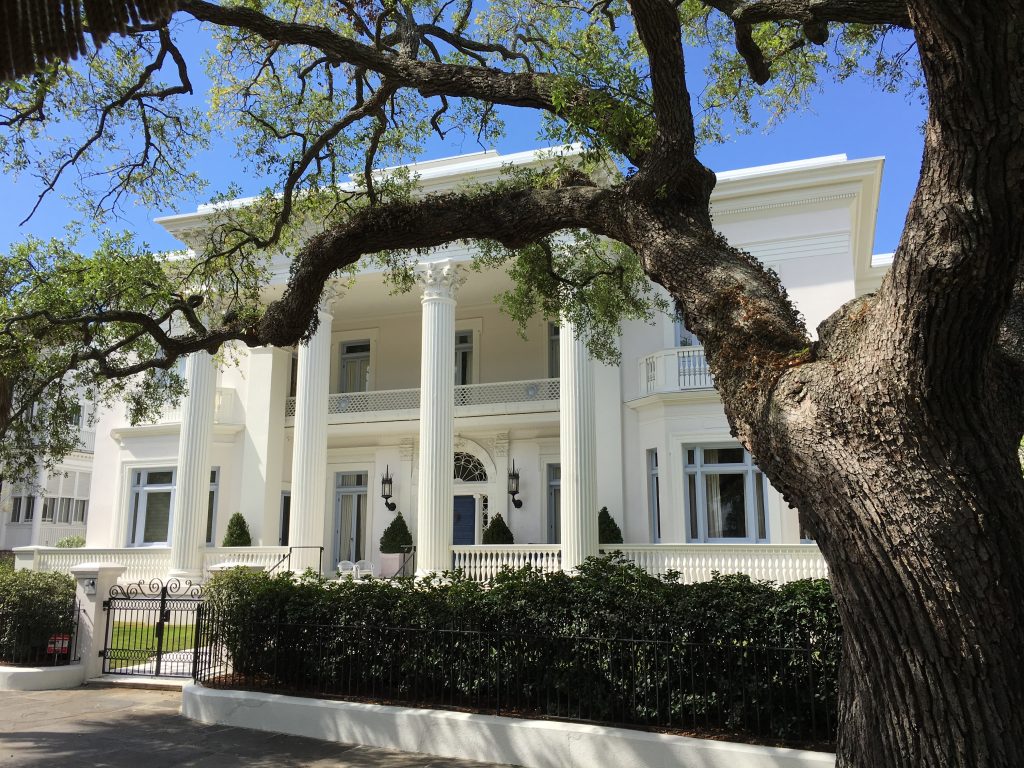
In the evening, we sampled Ceviche, crab chowder and fresh seafood prepared Southern Lowcountry style at Coast Bar & Grill, accompanied by cornbread with cheddar and jalapeño. We then explored the fun atmosphere of John Street, home to the Charleston Music Hall, just steps from the Hampton Inn.
Charleston offers something for everyone: history, architecture, enticing walking tours, innovative gastronomy, wonderful hotels, music, art and beautiful views that will provide you with Instagram content for many weeks. Visiting this charming city is relaxing, inspiring, romantic, educational, fun, and so wonderful that it is no surprise that it has won national awards for many years as America’s top tourism destination.
 Five Day Travel.Com
Five Day Travel.Com 